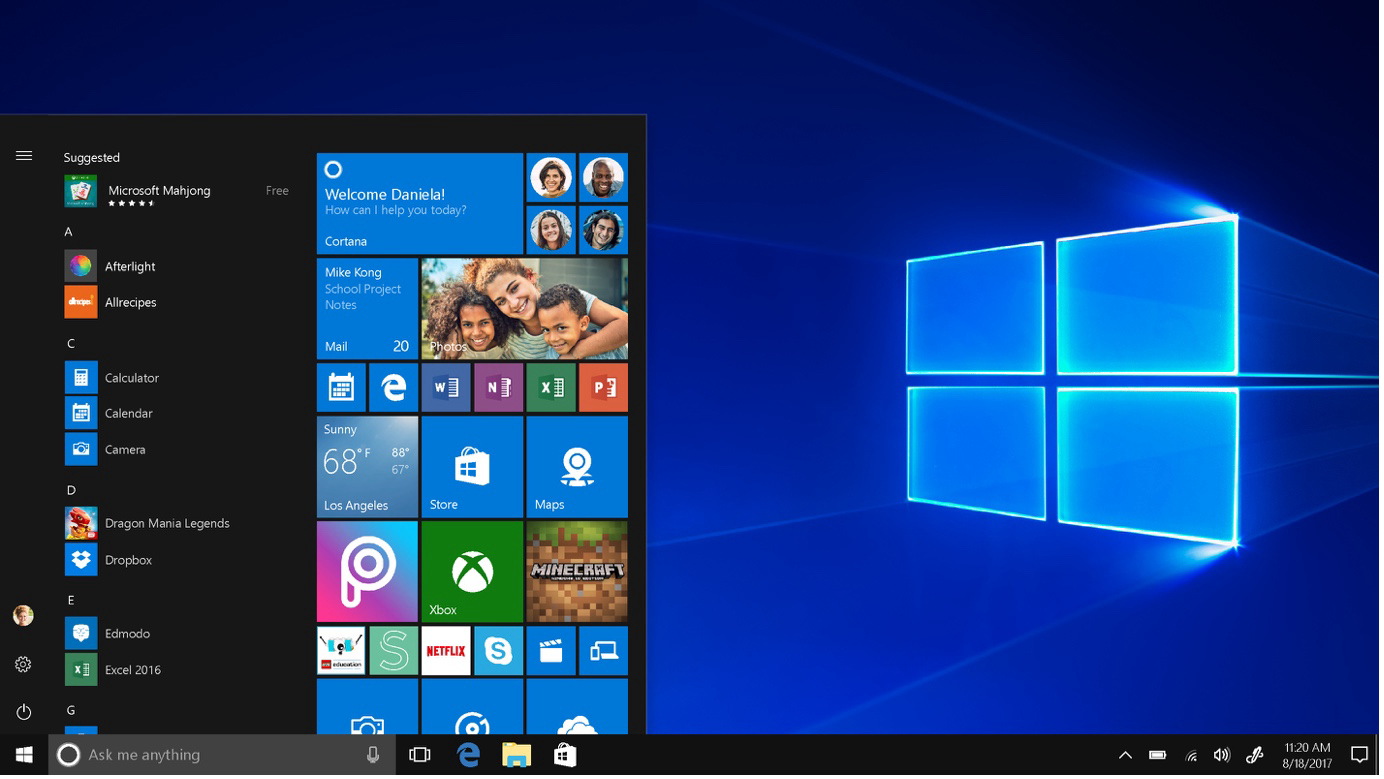
Windows 10 End-of-Life: What It Means for Your Business

The release of Windows 10 in 2015 marked a major milestone for Microsoft operating systems, moving to a more contemporary, versatile and user-friendly platform. However, all good things must come to an end, and after nearly a decade of faithful service Windows 10 will reach its official end-of-life on the 14 October 2025.
Read on to discover what this will mean for your business and why you should start your transition to Windows 11 today.
What Does Windows 10 End-of-Life Mean?
When an operating system like Windows 10 reaches its end-of-life (EOL) the regular updates, security patches, and technical support that are automatically provided finish. After this Windows 10 will continue to work, but you will no longer receive the crucial updates that address security vulnerabilities or enhance performance. If you continue to use Windows 10 it could expose your business to significant risks. These include an increased risk from security threats, compliance issues, and reduced compatibility with newer software.
Did You Know
60% of breaches suffered by businesses were caused by unpatched vulnerabilities*
50% of organisations are running outdated technology**
Not updating technology has been found to hold 90% of businesses back***
The Key Implications of Using Windows 10 Beyond 14 October 2025
The continued use of Windows 10 after its EOL will have extensive and serious consequences for your business. Some of these problems may include:
> Security Issues
The biggest risk of using an outdated operating system such as Windows 10 is the significant increase in exposure to cyber threats. After Windows 10 reaches its EOL, Microsoft will stop releasing security patches or updates for this operating system. As these contribute to protecting your networks against the latest threats, your business will become more vulnerable to cyberattacks. For this very reason, attackers often target systems that are running unsupported software because it’s known that they are easily susceptible.
> Compliance Concerns
The continued use of Windows 10 will affect your compliance with industry standards like the General Data Protection Regulation (GDPR), Payment Card Industry Data Security Standard (PCI-DSS), and the International Organisation for Standardisation (ISO). These regulations often specify that organisations should keep their IT infrastructure current and secure to safeguard critical data. Failing to maintain these compliance standards can result in large fines, legal issues, or the loss of official certifications.
> Lack of Support and Assistance
When Windows 10 reaches its EOL, all technical support and help will entirely come to an end. This means if a problem should occur your users will no longer receive assistance from the Microsoft support team. Any technical problems will become a challenge to resolve, and this could have an impact on your users’ continued productivity.
> Compatibility Challenges
Compatibility issues may happen if you choose to continue running Windows 10 on a device. Your business might experience problems such as devices, drivers or software failing to work properly on an out-of-date platform. These issues could reduce your users’ productivity, limit functionality, and require you to pay for expensive updates or temporary fixes in the short term.
> Performance Degradation
If you choose to continue to use Windows 10, you may find its performance declines over time due to a lack of optimisation and compatibility issues without Microsoft’s critical updates. For instance, you might experience slower system performance and increased instability.
> Increase of Total Cost of Ownership
You may think that not updating Windows 10 could be an easy cost-saving measure, but it can lead to a higher cost of ownership. Although upgrading to Windows 11 can seem like an expensive option, the cost of a security breach, noncompliance, loss of productivity, and compatibility issues can make it a savvy decision.
Your Options When Windows 10 Reaches its End-of-Life
The end of Windows 10 might seem daunting for your business to navigate. However, it presents the chance to embrace modern technology and a more productive future. To ensure a smooth transition it’s important to plan, budget for the upgrade, and prioritise your data security. Here are some of your options when Windows 10 reaches its EOL:
> Upgrade to Windows 11
Upgrading to Windows 11 is the clear choice for many organisations. It will ensure that you continue to benefit from seamless security and optimal performance. Windows 11 offers new features, enhanced security and a modern computing experience, safeguarding you from emerging threats. By upgrading to Windows 11, you not only access continued technical support, but it will unlock new capabilities that boost both productivity and efficiency.
> Continue to Use Windows 10
While it might be tempting to continue to use Windows 10 beyond its EOL, ignoring this deadline could compromise the security of your data and networks. Without essential updates, your devices will be increasingly vulnerable to cyber threats. Therefore, it’s crucial to either upgrade to Windows 11 or consider an alternative software solution.
> Pay for Windows 10 Updates
If your business is in the position where transitioning to a new operating system isn’t a viable option, you can consider paying for extended security patches and updates. Although this option provides a short-term fix, it’s important to think about the long-term cost and ramifications. Upgrading to Windows 11 will offer a more cost-effective and sustainable approach, guaranteeing the latest security features and ensuring you have a future-proofed and resilient network.
> Replace Your Devices
Upgrading your hardware is an alternative option if you have outdated devices still running Windows 10. Windows 11 will come as standard with your chosen new PC, laptop or tablet. By upgrading your devices, you will gain access to critical updates and security patches. This said, it’s important to think about if your current devices are still functioning or if you depend on critical software that may not be compatible with a new operating system.
Prepare for the Future with Windows 11
It’s important that your business takes pre-emptive steps to protect your IT infrastructure as Windows 10’s EOL approaches. Upgrading to Windows 11 gives your organisation the chance to embrace modern technology that provides improved security, compliance, and support.
Don’t leave your Windows 11 upgrade until the last minute! If your business is still operating Windows 10 or below on its devices, we recommend that you plan for your upgrade to be in place before the 14 October 2025.
By planning your upgrade now, you can future-proof your IT infrastructure, allowing your business to benefit with minimal disruption.
Start your Windows 11 upgrade today by contacting our Croft experts.
